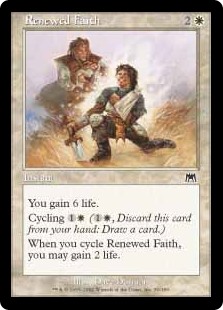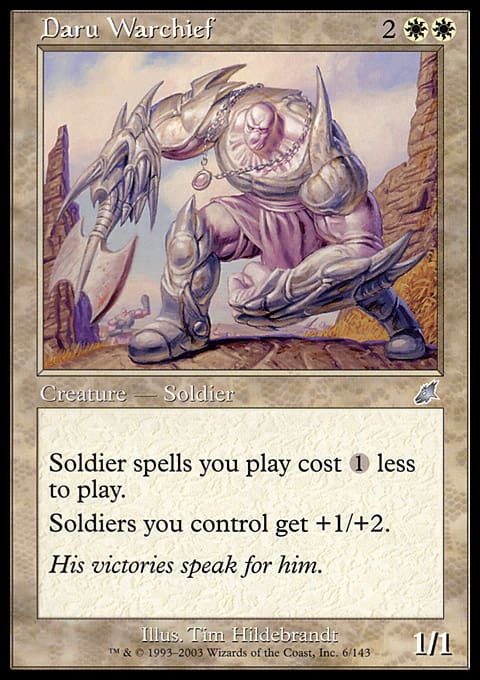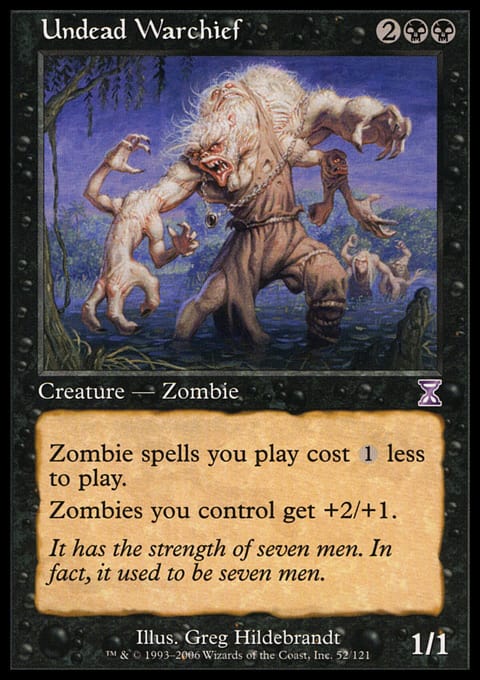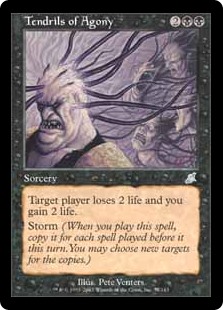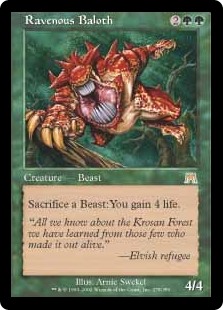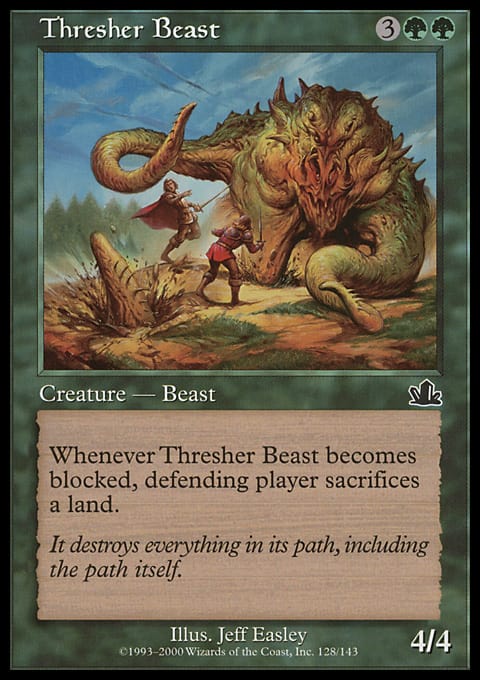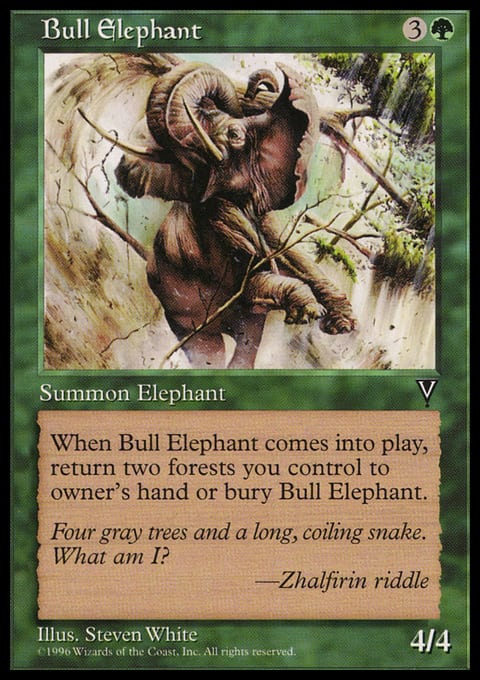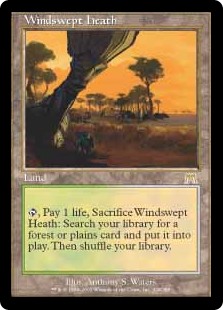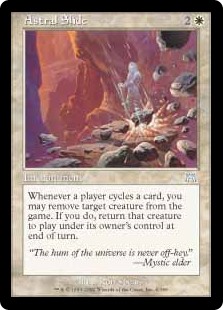Hello folks! I hope you are having a great day today! Last year I began this series where I would give you my choice for the best cards of each block, beginning with the first modern block - Mirage Block, and then moving forward.
I began playing this game in 1994 and played from then through last week. I've never left or gone on an MTG-Free walkabout. Most folks playing today haven't had the same level of consistent playing experience. They are recent additions who may not have ever played during some of these years, or they went on a sabbatical for a while, and then came back after a few years away. Either way, there are eras of the game that most people out there haven't actively played during.
This series is geared at them. The goal is to give a synapsis of that block, as well as look at a number of cards from the Block that were very good at the time. For example, in my Invasion Block Article, when I discuss the power of Fact or Fiction, I talked about how it came to dominate Vintage as a part of that conversation. I'll talk about how prolific Flametongue Kavu was, or Masticore, as cards that were heavily played during Standard.
It's also a fun throwback for folks who lived and played during this era too!
Today we are turning to the final set before we hit Modern. This is Onslaught Block.
Onslaught gave us a very different take on cards. Other than Mirage, Tempest and Masques Blocks, every other block or set since then has had some odd drafting key that would spin folks into new directions. From the multicolored of Invasion Block to the graveyard matters theme of Odyssey, through modern themes such as enchantments mattering in Theros Block or historic matters in Dominaria. Each of these themes is meant to give a brand-new drafting experience.
The previous block to Onslaught Block was very Spike heavy with a number of powerful cards and decks. It featured decks like Psychatog and Upheaval, Mono-Black Control, and ![]()
![]() Madness, that dominated the era; particularly the first and latter.
Madness, that dominated the era; particularly the first and latter.
However, the new set and block were different. This was the first Tribal block, so it had a strong creature type matters theme. This is where concepts such as morph met powerful Timmy cards as well as Johnny creature-type shenanigans. It led to a few new cards and decks breaking out, one of which I championed and took very far in tournaments - Mono-White Control:
Mono-White Control | Casual | Abe Sargent
- Creatures (13)
- 2 Akroma, Angel of Wrath
- 3 Eternal Dragon
- 4 Exalted Angel
- 4 Weathered Wayfarer
- Instants (8)
- 4 Renewed Faith
- 4 Wing Shards
- Sorceries (11)
- 3 Wrath of God
- 4 Akroma's Vengeance
- 4 Decree of Justice
- Artifacts (2)
- 2 Mindslaver
- Lands (26)
- 20 Plains
- 2 Temple of the False God
- 4 Secluded Steppe
And there you are! We have a number of fun cards from a similar angle of happiness and joy.
I have also called pure Onslaughtx3 as one of my favorite draft environments of all time. The latter sets go off in wonky directions with Legions's quirky "Every Card is a Creature" weird-ness, and Scourge's "High Casting Cost Matters" similarly off-putting bizarreness.
What's the best of the best from this entire block? Great question!
Please note that unlike many of my Top Ten Articles out there, this is not a kitchen table, multiplayer, or Commander-directed list. I was playing lots of tournaments during this era, so I am looking at the normal, dominant cards from this Block and era. Thus, you won't see cards in here such as Insurrection, Syphon Mind, Seedborn Muse, Sliver Overlord, Timberwatch Elf, or Bane of the Living that are kitchen table all-stars. Nope! This is more of your typical list.
10.Akroma, Angel of Wrath // Phage the Untouchable
Akroma was so good that it was an ideal game-ender for Mono-White Control and cast a powerful shadow over many a deck. Or player. She's probably one of the most played forces of face-punchery out there. From Oath of Druids to Standard to Block and more, she's made the cut in many a place, and was voted on by fans as the best legendary dork of all time. Meanwhile, Phage was something new to the game. Did you punch a foe with her? They lose! She has player death-touch. Now they gave her a ridiculous cost and the inability to cheat her out to ensure that you wouldn't be able to get a quick kill off a card like Shallow Grave. But she was still great in decks like Mono-Black Control as their winner of choice behind Cabal Coffers. Enjoy the face-smashing of these game ending powers.
9. Krosan Tusker with a Shout Out to Renewed Faith
I'm so happy that the Tusker is Modern legal now! One of the renovations that this block brought to cycling was the cycling trigger. Cards like this or Renewed Faith are great because they can be cycled and still give you an effect, while also drawing a card. You can also cast the card if you need to. Sometimes, you just need life or a 6/5 beater, so you could drop these instead. But cycling triggers were awesome, and they were heavily used. Krosan Tusker was the best because it gave Green a powerful tool it rarely had before - card drawing. Because here is what Tusker actually does:
![]()
![]() , Instant, Cannot be countered. Tutor for a land. Draw a card.
, Instant, Cannot be countered. Tutor for a land. Draw a card.
Three mana, two cards. Perfect.
8. Decree of Justice
Similarly to the above cards, the Decree cycle from Scourge was the final coda on cycling triggers, and was meant to be strong. Decree of Pain is still a nasty card in multiplayer and casual lands! Decree of Silence is still the best card for Type 4! But those have never stood up and held a candle for Decree of Justice. It's just a great feeling to cycle this at the end of someone's turn, draw a card, make 4 or 6 1/1 tokens, and swing and eventually win. It's incredibly powerful, and I can't tell you how many games I've won with Soldier tokens. The Decree of Justice, when cast normally, can make some 4/4 flyers. I will sometimes hard cast it if I need to fly over some ground based defense, but I find that I cycle it 90% of the time. I can't avoid the cycling card draw.
Abe Sargent: Winning by drawing cards since 1994.
7. Goblin Warchief and his Friends
Goblin Warchief was one of the uncommon Warchief cycle in Scourge. This cycle was meant to reduce the cost of the creature type, and then also to give you an ability that would help. Some of these helped to push a deck over the top, such as Krosan Warchief that helped enable Beasts in Standard. But Goblin Warchief was different with that nasty haste punching you in the face.
Here are two separate Warchiefs to illustrate what they did and looked like. But the Goblin Warchief screwed up twice. It granted haste, and it was three-mana. It enabled fast Goblin kills, with the Prospector sacrificing goblins and tokens for Red mana to power out stronger face-punchers, such as Piledriver. Imagine that you curved these cards on turns 1, 2, 3, and 4. That means you did this:
Turn two - Attack for 1 damage with Prospector.
Turn three - Attack for 7 damage with Prospector, Piledriver, and Warchief
Turn four - Attack for 21 damage.
You might win that game! Note that all four are Modern legal now, but that deck is too slow and easily disrupted for Modern. A single Lightning Bolt, Path to Exile, or Fatal Push can take out the Warchief. But it dominated in its day. (You'll note that you can sacrifice a first turn Prospector for a Warchief on the 2nd turn, which is stupid good; I didn't use it in my math above because I wanted to be nice...). You would see it in many winning Extended builds, such as initial Goblins Extended builds as well as later combo builds known as Dirty Kitty. It impacted Legacy. It was in decks like Food Chain Goblins combo. It's cheap cost and hasting powered many a deck!
6. Stifle
Stifle was so good that it was played all over the block. Vintage decks main deck? Yup! Legacy? Yup! It's still heavily played all over a number of formats. Why? Great question! It's a one mana answer that will stop mean things your foe wants to do on the first turn. Imagine you drop a shock duel on the first turn, and you have Red and Blue available off Steam Vents. Now if your foe goes, "Wasteland, sacrifice" to try and destroy my land, I can cast Stifle. Not only will I counter his use of Wasteland, but it's still sacrificed, and now I am up a mana as well. I am now in a much more powerful place to win the game. It's also powerful against fetch lands. First turn, crack a fetch, is done in most formats where they are legal. Stifle is a strong answer to the fetch problem. And that's not all. You can do everything from counter a Fulminator Mage to a key activation of Bazaar of Baghdad or a planeswalker, and more. Simply put, Stifle is too strong not to be here!
(It also counters the trigger on the next card too, by the by).
5. Tendrils of Agony With a Shout Out to Brain Freeze
Today, Tendrils has created many a deck-archetype around killing with a Storm combo. You'll see decks abuse the casting and recasting of spells. In Vintage in particular, you could smash kill folks quickly. Other storms were used for a long time as well. I once built up a storm count of more than 100 without using any infinite combos, so I could Brain Freeze and mill-kill four opponents with 250 card decks on the first turn at multiplayer game after taking 35 minutes. I never played that deck again, but it was fun once. You could use cards like Hurkyl's Recall to slam up your spells, as well as Draw-7s and such. I even Timetwister'd once. I also broke Mind's Desire in that same deck. However, today the legacy from the storm combo is Tendrils, as it's the easiest to win with - you need the fewest amount of storms to win with someone at their starting life total.
For example, you have a strong Legacy deck right now around Ad Nauseam and Tendrils that wins in one (hopefully) turn. You can check out a recent version of the deck over at ChannelFireball if you want to learn more about playing it.
Meanwhile, many Vintage decks use Paradoxical Outcome to bounce their jewelry while drawing tons of cards, and then blast an elevated storm count for the win with Tendrils. It is the real thing.
4. Ravenous Baloth
If you didn't play during this era, you may not get how Ravenous Baloth changed MTG and how powerful it was. This card changed Magic forever. He was the signal that creatures weren't going to suck anymore, and the beginning of the end of that era of the game, and the beginning of the modern era. For this reason, he was played in many decks. Standards Beats? The Rock? Verdant Succession Combo? Lots of tournament winning builds featured him.
Here's, let's do a deep dive to show you why:
This was the state of 4/4 creatures in Green prior to Ravenous Baloth:
The first place to get a 4/4 was the vanilla five-mana Durkwood Boars from Legends. Then the very next set you could start to get 4/4s for 5 mana with abilities. This would continue and be a feature moving forward. Great!
However, this would take some time to become the key for dorks moving forward.
The first four-mana 4/4s in Green would have disadvantages.
The first four-mana 4/4s in Green were cards like Nettletooth Djinn and Bull Elephant. You had to pay to bring out a 4/4 that early in the game, and as you can see, you had significant disadvantages attached to them. Was Mirage Block the only place that you had to pay? Nope!
And then the Baloth came, and showed that you could get, not just a vanilla four mana 4/4 but one with an advantage. And that became the new normal! Many a creature later would be strong in the red-zone while having a useful curve and slate of abilities. This one did too. And again, it was played in many tournament winning builds too, for that reason. It was the banner card that times were a changin'.
For example, here was the 2005 Seattle Grand Prix Champion, Ernie Marchesano's deck:
The Rock | 2005 Standard | Ernie Marchesano, 2005 GP Seattle Champion
- Creatures (20)
- 1 Withered Wretch
- 2 Troll Ascetic
- 3 Eternal Witness
- 3 Ravenous Baloth
- 3 Sakura-Tribe Elder
- 4 Birds of Paradise
- 4 Wall of Blossoms
- Instants (6)
- 3 Smother
- 3 Vampiric Tutor
- Sorceries (6)
- 1 Chainer's Edict
- 1 Cranial Extraction
- 4 Cabal Therapy
- Enchantments (5)
- 1 Recurring Nightmare
- 4 Pernicious Deed
- Lands (23)
- 6 Swamp
- 8 Forest
- 1 Dust Bowl
- 1 Volrath's Stronghold
- 3 Treetop Village
- 4 Llanowar Wastes
Here, as you can see, are three copies of Ravenous Baloth, a standard number for The Rock during its heyday. You also had the Baloth in two separate Beast builds that did well in Standard- one featured Contested Cliffs that would fight and slay opposing dorks, and the other featuring Patriarch's Bidding that would sacrifice any Beasts in play to Ravenous Baloth and then recur them all, including the ones you just killed, with the Bidding. That's how good Ravenous Baloth was. Don't sleep on it. Don't forget it. And don't ignore how historically important the Baloth was. We are all living in the Post-Baloth era, and we are better players for it!
3. Fetch Lands
Duh. I mean, come on. Any list missing this is silly. Much like the Baloth above, these changed Magic. They made the game about fetching out lands, and they also changed mana bases permanently. There was a big conversation about them in formats such as Vintage and Legacy. How many should we run, how many other lands, etc. It took a lot of experimenting until we had a good feel for them moving forward.
Check out Oscar Tan's conversation about it in Vintage, for a good example.
Here's a neat quote from Tan in that article: "It's not a question of whether or not to use them, but how... And years' worth of mana-tuning intuition is suddenly out the window."
That's the impact they had. They defenestrated all existing knowledge, but in a good way. And from Modern to Standard to Legacy to Extended to Commander to Vintage to Any Other Format Where They Are Legal; they are getting played. Heavily. Desired. Heavily. Much like the Baloth above, we are now all living in a post-Fetch Land world.
2. Astral Slide // Lightning Rift
The Rift-Slide deck was one of the most iconic decks during its day. As you cycled one card, you drew another. If enough of your deck had a critical mass of cycling, then you could cycle into other cards with cycling, and then you could keep up. All you needed was mana. From the cycling lands, to cards like Renewed Faith, Slice and Dice, and Gilded Light, we had cards that were getting played that could be cycled away. All you needed was 1 mana to trigger a Rift-Shock to kill your foes while the Slide was great. You could Slide out something that dared to attack you to keep yourself safe. You could Slide out your own dork to keep it safe from removal. You could slide out something with morph, and then slide it back again. There were a number of these effects out there!
1. Exalted Angel
One of the best ways to tell how powerful a card was during its heyday is to see how many decks ran it. Two of the most common builds - Mono-White Control and Rift-Slide ran this as a four of. The first saw this as an ideal 3-drop into a four-drop swinger. A 4/5 flying, lifelink that swings on turn four is a challenge to answer. If it connects just one time, that's an eight life swing, and for each other time after that, it's harder to answer. In Rift-Slide, you could drop this for three mana, and then cycle something, and Slide it out, and back into play without needing to pay its morph cost. Both got strong value from it! This card was the Baneslayer Angel of its day, only it could win games faster!
And there we are! I hope you enjoyed reading my list. Anything in here I missed, or you would recommend? Any stories of these cards in tournaments or Limited you want to share? I'd love to talk more about it!
Appendix of Top Ten Block Lists:
Did you enjoy our throwback list of the best cards of yore? Did you want to keep going back and check out some more fun times? Excellent! Check these out as well!

















